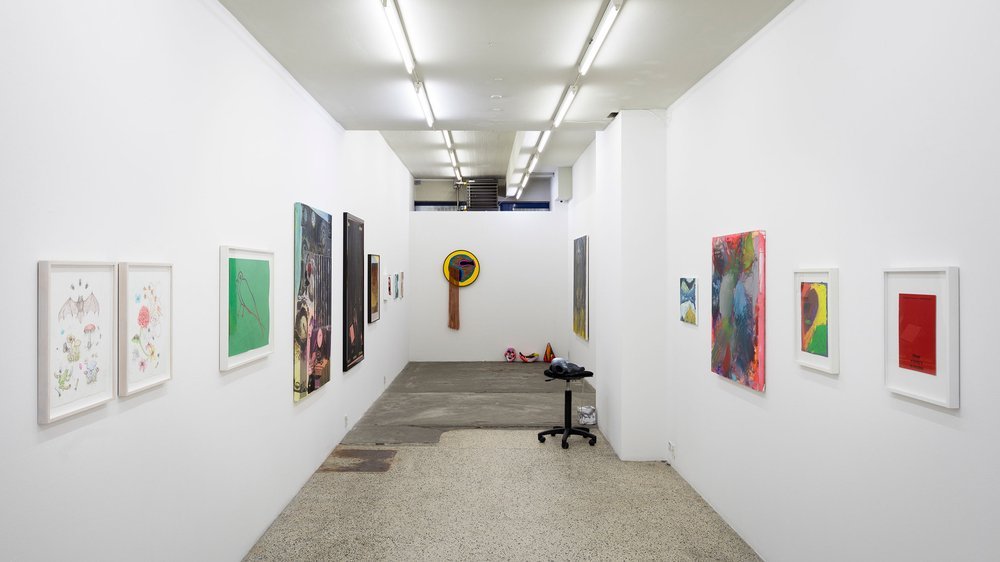Sophie Dupont’s ‘This will also change.’
*Archive Article: Originally published in the magazine Blacklisted Copenhagen on August 29, 2017
One of the things that I feel you can often recognize in an artist trained in the processes of Performing Arts, is a focus on making the audience aware of their own gaze.
As there is no commodity in performing or performance art, as there is in visual arts, the intent must be to effect the perception of the viewer. In other words, the intent is not to create an object that a viewer can admire, but to create an experience that alters the state of the viewer’s being, i.e. wrapping them up in a narrative or making them aware of their presence as a watcher.
As a woman who was trained as a classical dancer, you can see some of those disciplines showing through in the work of Danish artist Sophie Dupont. Her work is often incredibly physically demanding, even though it is not always classically choreographic in nature. Working with elements of weight, balance, and mass, Dupont fabricates various objects for both herself and the audience to interact with, all in the name of various concepts intent on altering the state of being of her audience. The sculptures are not stand-alone pieces with concept and intent poured into them. Her works are both sculptures and tools that she uses to alter the audience’s perception of their own ‘self’ within a space, as well as a physical documentation of her own enacted processes of exploring her own being.
For her newest collection of work, Dupont works with the conceptual framework of ‘vertical’ and ‘horizontal’. The questions regarding how we perceive, “what is vertical?”, “What is horizontal?”, and “How do they affect our perception of the world?” are classical principles of composition that you can find in everything from artworks and architecture to design and product development. In other words, considering these questions is a fundamental starting point for many creative processes.
I visited Dupont in her studio, while she was developing the objects and sculptures that will fill the space in her solo exhibition at Overgaden Institut for Samtidskunst, and she took me through a tour of the works and how she will use them to alter the gallery space. I took this as an opportunity to ask her a few questions about her a couple of questions about her work and her processes.
You began your training in performing arts, can you tell me how those practices and disciplines find your way into your more sculptural visual work?
I guess it’s a way of being. I often see things in images. When we talk I picture how it looks. The shapes, the colors. If you tell me about an emotion, an idea, or anything, I instantly paint or sculpt it in my head. It’s not something I decide to do but it’s how I work -so to speak. Also, I often sense and feel it in my body – it can be just a random sentence I for some reason feel somewhere as a bodily manifestation. And this is how I construct my works – I always let them grow from this starting point. I don’t know if this is because of my many years of training as a dancer or I was like this since I was born – but for sure my many year’s training emphasized this quality of quality and awareness.
INTERVIEW
You mention that your work often explores a state of ‘being’—specifically with the audience. Can you elaborate on that?
I always felt if I were to tell the one story – what would I tell – if I told you about the ocean I would miss out on telling about the sky, the earth, the forest etc – I always strive to tell the essence. It was always a problem how to capture this. Most of the time during the academy I felt so frustrated because I felt I couldn’t capture the essence. I came to the conclusion that maybe none of the things were important but the life itself – the pure being and this is what I’m now trying in all my works to explore, to research, to question. The pureness of the different aspects we are as human beings. Before job, sex, economy etc. And by doing this creates a space for just being with what we are;- being with balance, with weight, with the mind.
Within the framework of ‘exploring the horizontal and vertical’, how will you use those concepts within the space of Overgaden?
I see the horizontal aspect of life as the space of how we act and react in life, in this world, and around other people. How do we communicate ourselves to the outer world? How we are constantly in this flow of ever-changing states of minds – as is the title of the carousel: This Will Also Change.
Whereas the vertical is the space for inner awareness, where we go inwards and communicate and reflect on ourselves, and how we are human beings in this world. And for this, I have chosen my works that all have to do with breathing – and breath awareness like the one I started in 2011 Marking Breath.
In ‘This will also change’ Dupont again shows her prowess at manipulating the concepts of space and audience. Her sculptures are placed within the rooms of Overgaden with a masterful understanding of how to force the viewer to interact with her work, and when to observe–making them constantly aware of both their inner and outer selves.
As one enters the space, one is met with a decision to enter into a large space with a carousel-like sculpture in its center. When speaking with Dupont, she confided that she was interested in whether the viewer would break through the gallery stigma and begin to interact with the moveable and spinning sculpture. It was not a requirement but simply hope for an interesting observation of audience and object interaction.
Should one choose to navigate away from that room, the audience is then forced to maneuver through a web of wireframe shapes that disorient the eye as to their true depth and placement–again showing Dupont’s acuity for manipulating an audience into being both aware of the space, and aware of themselves within the space.
As one enters the farther reaches of the gallery, they are met with an austere space with large open spaces between the various sculptural and process-based artworks, as if the intent was to give the viewer room to open and breathe after weaving their way through Dupont’s wire frame maze. The collection of work therein works more as a documentation of Dupont’s own personal explorations of ‘being’, so which the audience must simply observe, others which can be interacted with.
All in all, there is much to explore in Dupont’s newest collection. Each piece adds to her evolving exploration of internal and external “being”, but also goes beyond the notion of being a momentary stage prop for a performative work. Each piece, while part of this larger whole, stands alone as a testament to an exploration of a specific concept of being–whether it be the “horizontal”, the “vertical”, sound, breathing, or our own perception of space.









